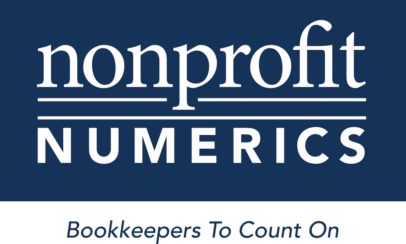Let’s be honest: budgeting probably wasn’t the reason you started a nonprofit. You’re here to change lives, not crunch numbers. But here’s the good news—a strong budget isn’t about restrictions; it’s about freedom. Freedom to focus on your mission, seize opportunities, and sleep soundly knowing your finances are working for you, not against you.
This guide walks you through budgeting step by step—no jargon, no overwhelm—just practical, actionable steps to help you plan with confidence.
Step 1: Define Your Nonprofit Budgeting Goals
Your budget isn’t just numbers—it’s the roadmap for your nonprofit’s success. Ask yourself:
- What are our key objectives this year? (Expanding services? Hiring staff?)
- How can our budget reflect these priorities?
- What does financial stability look like for us?
Nonprofit Budgeting Example:
If your food bank aims to serve 20% more families, your budget should reflect increased grocery costs, outreach efforts, and maybe even the purchase of a second fridge.
Step 2: Gather Your Org’s Financial Data
Your past financials provide valuable insights for the future. Collect:
- Last year’s budget: What went as planned? What surprises did you encounter?
- Grant agreements: Identify any restrictions on how funds can be used.
- Fundraising reports: Analyze which efforts brought the best returns.
Budgeting Pro Tip:
Meet with your bookkeeper or treasurer—they’ll have insights you might overlook.
Step 3: Estimate your Organization’s Revenue Realistically
Nonprofit funding can be unpredictable, so be conservative with estimates:
✔ Donations: “We raised $X last year—can we grow by 10% with better donor engagement?”
✔ Grants: “We expect our $5K youth grant to renew, but let’s not count on potential new ones.”
✔ Events: “Our annual gala raised $8K—what if we added a silent auction?”
Budgeting Rule of Thumb:
It’s better to underestimate income and celebrate a surplus than the reverse.
Step 4: Plan Expenses Wisely
Balance mission-driven spending with operational needs:
- Program Costs: Direct expenses like supplies, training, or outreach.
- Administrative Needs: Staff salaries, office space, software.
- Emergency Fund: Set aside 3-5% for unexpected costs.
Budgeting Rule:
A sustainable nonprofit typically spends at least 70% on programs and up to 30% on admin and fundraising.
Step 5: Draft Your Budget
Use a simple spreadsheet or tools like QuickBooks Online. Include:
- Income: List every revenue source, including grants, events, and small donations.
- Expenses: Categorize costs by program, admin, and fundraising.
- Bottom Line: Income – Expenses = Surplus/Deficit (Adjust as needed).
Step 6: Review and Refine your Organization’s Budget
Share your draft with:
- Your board’s finance-savvy member.
- Program staff who understand operational needs.
- A critical-thinking volunteer who asks tough questions.
Scenario Planning for Nonprofit Budgets:
- “What if donations drop by 15%?”
- “What if we receive an unexpected grant?”
Step 7: Monitor and Adjust
A budget isn’t static—review it regularly:
- Monthly Check-ins: Compare actual vs. budgeted spending.
- Celebrate Wins: Redirect savings toward strategic goals.
Nonprofit Budgeting Best Practices
✔ Engage the Board: Keep them informed and involved.
✔ Track Restricted Funds: Clearly separate grants with specific usage rules.
✔ Use Technology: Affordable tools like QuickBooks, Airtable, or EveryAction can streamline tracking.
✔ Plan for Growth: Even a small “innovation” fund keeps future ideas alive.
Your budget is the backbone of your mission. A well-managed budget means less stress and more time for the work that matters most—making an impact in your community.



